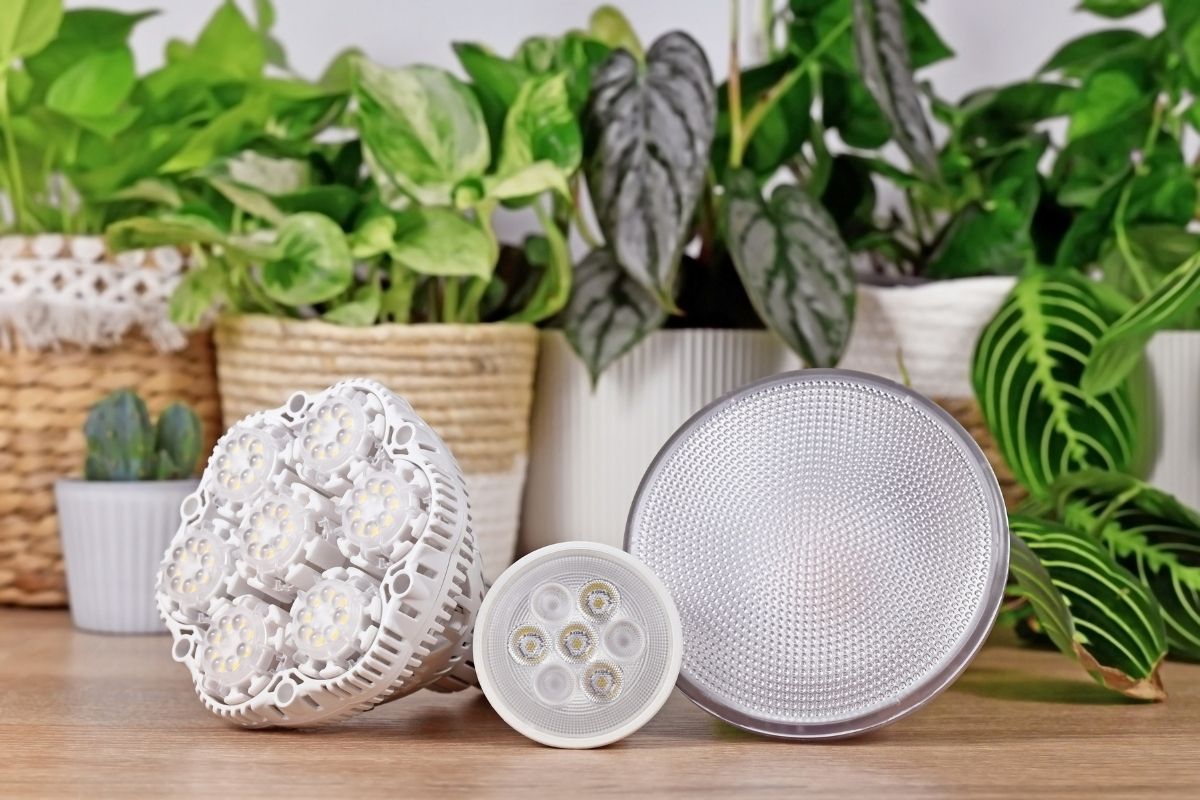Grow lights are every serious indoor gardener’s best friend. Artificial light offers complete control over the light hours, negates seasonal changes, and allows indoor gardeners to extend the photoperiods a plant is subject to.
The more light, the better. Right? I mean, why settle for 8-12 hours of light a day when you could expose plants to 24 hours of the stuff?
The truth is, exposing plants to that much light may not be as beneficial as you might think.
There’s quite a learning curve when it comes to learning how to use grow lights for indoor plants.
Let’s explore this further.
why plants need darkness
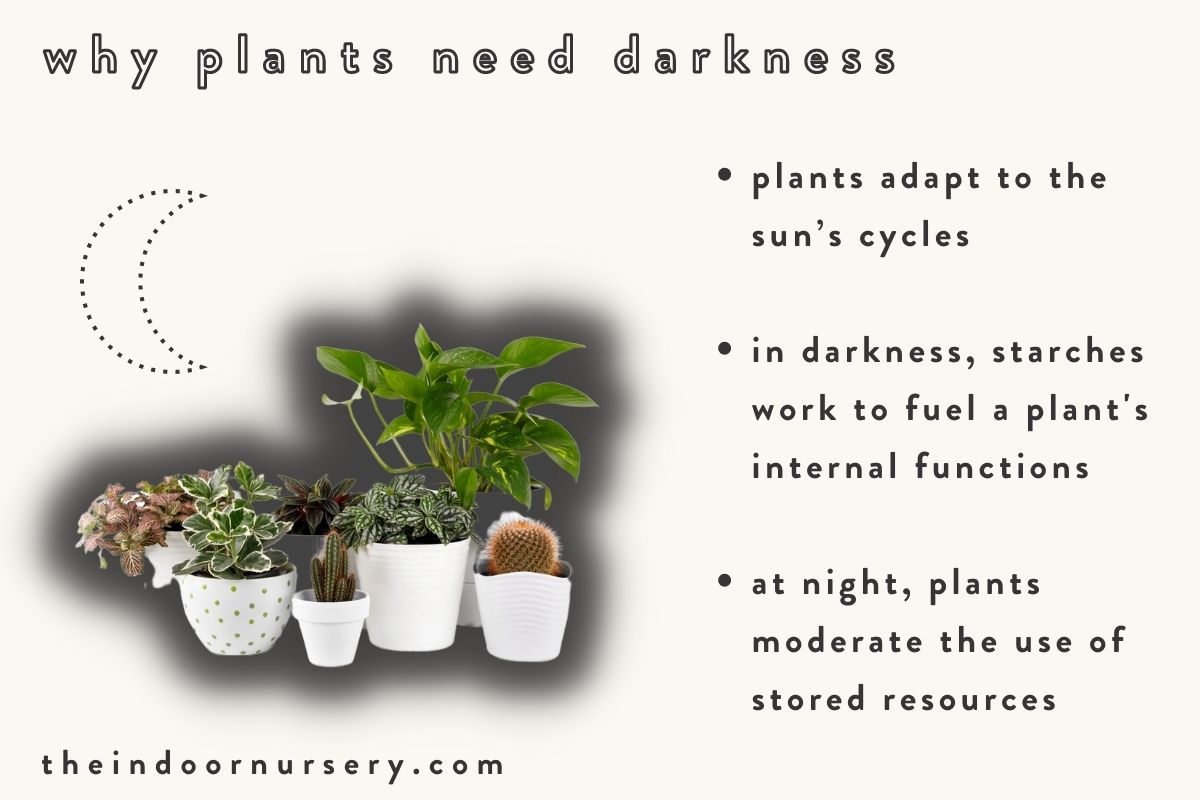
While some plants will tolerate 24 hours of light, most plants need both light and darkness. With that in mind, running a grow light around the clock can damage the photoreceptor cells of a mature plant, which perform vital internal processes at night.
Just like us, plants have biological clocks that are regulated by the sun, while different plant species have different lighting requirements and tolerances based on where they originate. Regardless of origins, however, in most cases, most plants need some amount of rest to process the energy they’ve captured during the daylight hours.
During the day, a plant’s chlorophyll molecules absorb light rays (called photons), which stimulate photosynthesis and break water molecules down into oxygen, which it releases, and hydrogen, which the plant uses to create sugars and starches. Plants store sugar and starch molecules during the day to use at night for sustenance and growth.
During the dark hours, plants use starch molecules slowly to fuel the movement of liquids and transformation of energy. Plants tune in to the length and intensity of sun cycles over time and moderate the use of stored resources at night based on this bio-chemical rhythm.
Sound like magic? Almost!
You can observe this regulation when plants adapt to seasonal climate changes. As temperature and weather gradually shift with daylight hours, plants adapt production and consumption rates in response to the new conditions.
what happens when a plant gets too much light
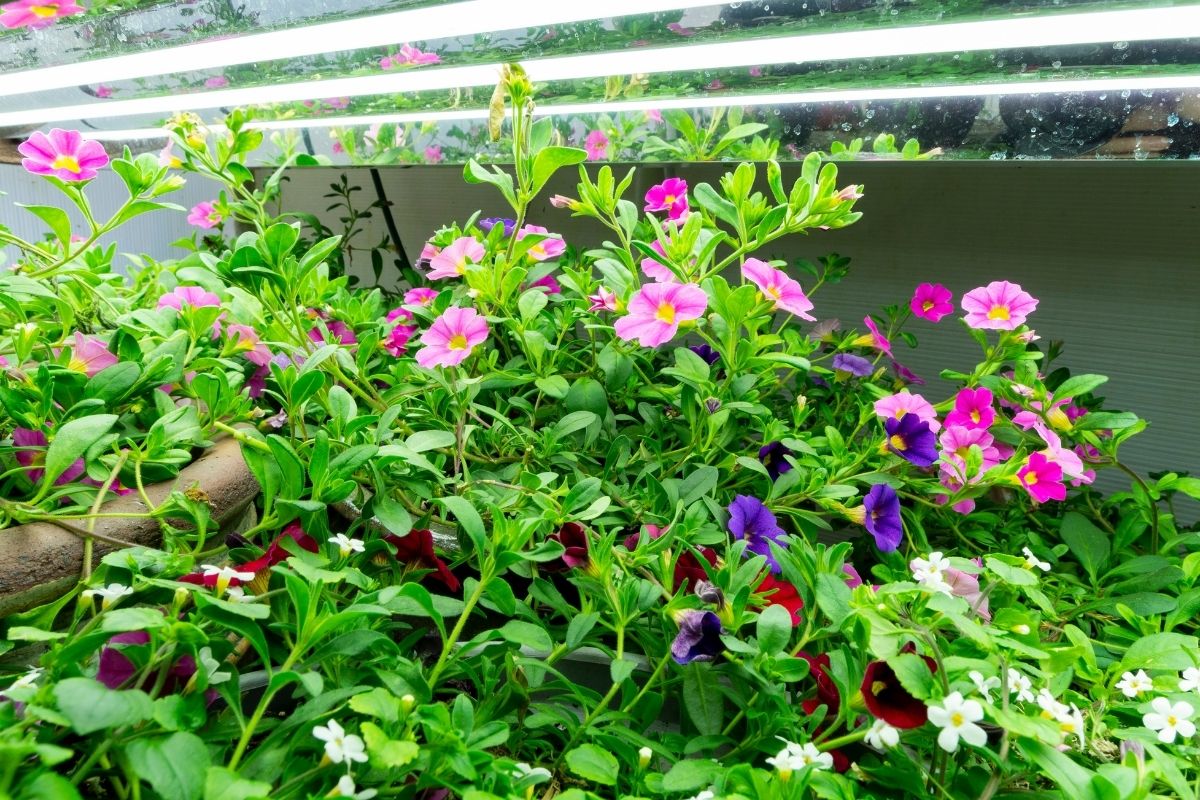
When an indoor plant gets too much light, especially in a sudden or extreme dose, its biological clock will become – for a lack of a better word – confused. With 24 hours a day of light, plants won’t be able to access the energy stores it normally receives at night. Too much light can quickly lead to stress related-issues like vulnerability to disease, pests, or tissue damage. And if you have a flowering plant, too much light can also delay its bloom phase or halt it altogether.
I want to be clear, this isn’t always a bad thing. In fact, in some agricultural settings, delaying the onset of flowering can be beneficial. For instance, if you’ve ever grown basil, you’ll know that when a plant goes to flower, the leaves quickly lose their sweet, delicious flavor.
Which is super disappointing!
The cool part?
Through tinkering with lighting conditions, scientist, agriculturalists, and horticulturists have worked out that if you extend the photoperiods a plant is subjected to, you’ll delay or completely eliminate a basil plant producing reproductive growth. To be clear, the flowering of basil is regulated by the plant’s photoperiod, or the length of time it is exposed to light each day. Longer photoperiods (more exposure to light each day) promote flowering, while shorter photoperiods (less exposure to light each day) suppress flowering.
But even in the case of basil, extending their photoperiod to the extreme eventually has detrimental effects. Scientists growing basil under a 24-hour photoperiod of photosynthetic-active radiation, the equivalent of all-day light, found that this lighting regime induced the most intense flavor molecule production.
In other words, the chemical that constitutes the beautiful taste we all enjoy.
The thing is, further experimentation also found that basil requires a dark period for optimal health. The plants, after being subjected to 15 days under 24-hour irradiance, exhibited stunting, chlorosis (yellowing), and development of leaf necrosis (the death of plant tissue).
This, I’m sure, is not the fate you’d wish on any houseplant.
light needs vary by plant species
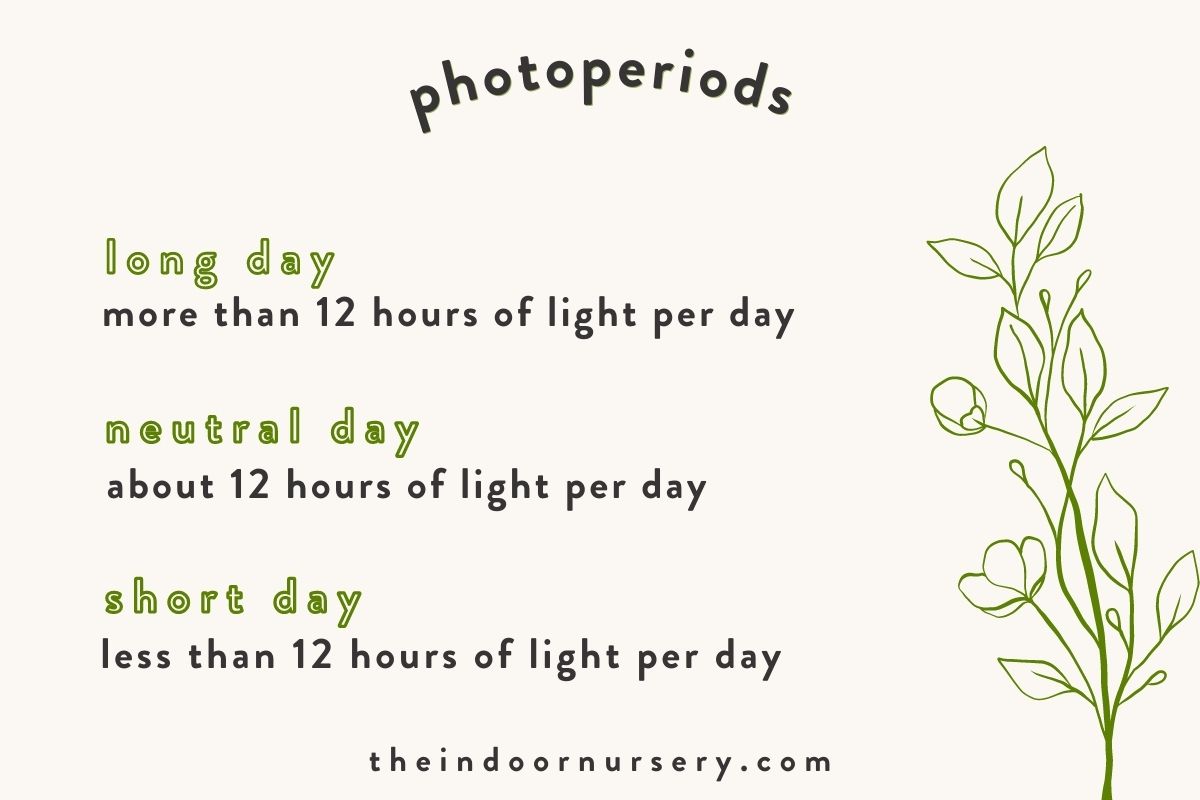
That being said, all plants have different needs when it comes to light. As I briefly touched on above, the number of hours of light your plant needs each day is called a photoperiod. For simplicity, there are three lengths of photoperiods:
- long day – more than 12 hours of light per day
- neutral day – about 12 hours of light per day
- short day – less than 12 hours of light per day
Most indoor plants have long day photoperiods and need between 12 to 16 hours of sunlight a day. The majority of houseplants are from tropical regions, which is why they stay green throughout the year. Gardeners using grow lights for greenhouse crop production typically expose plants to long day photoperiods that increase fruiting and yield year-round.
In parts of the world where daytime hours fluctuate throughout the year, grow lights makes it possible to supplement the needs of light-loving plants during the dark season. They also allow gardeners to grow plants in darker indoor spaces that get little to no natural light.
Neat!
figuring out how much light your plant needs
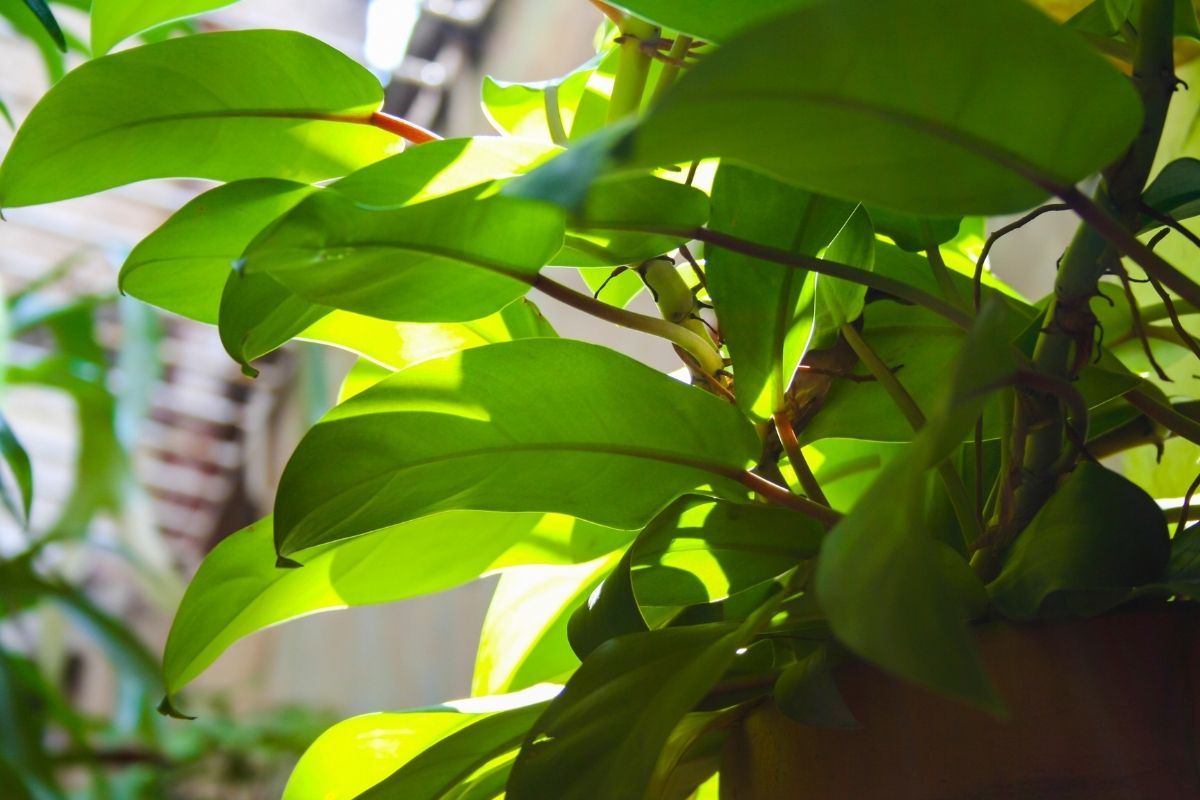
So the real question here is how much light do your plants really need? Or – what is its ideal photoperiod? To determine this magic number, you need to know where your plant grows in the wild. If it has flowers, you can also consider when it blossoms to figure out which photoperiod it requires. Since most plants grown indoors are warm-weather species, they are generally long-day plants that need between 12 and 16 hours of light per day. In seasons with days of 11 hours of sunlight or less a day, you can add those extra hours in with a grow lamp near your plants.
If you’re growing seedlings or plants for reproduction, the amount of light may differ from that of the average pace of growth for most indoor plants. Seedlings are able to tolerate 24 hours of light in their young stage of rapid growth, but once they reach adolescent and mature stages, it’s best you back off and begin to expose them to less light hours. If you’re encouraging mature plants to reproduce, give the plant up to 18 hours of light a day to mimic midsummer conditions and encourage flowering.
grow lights in living spaces
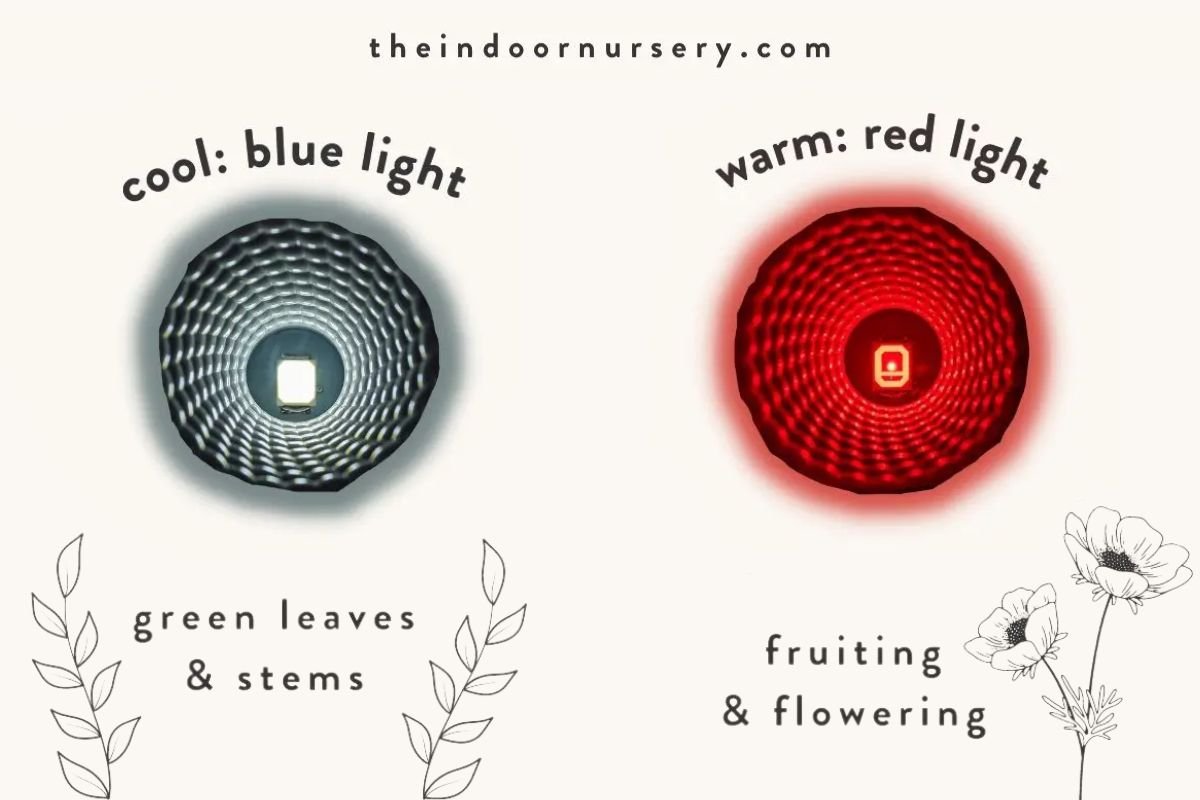
If you’re growing plants in a living space indoors, the length of time you have your grow light on will not only affect your plant, but you, too. If you’re using a grow light to supplement plants in any room that isn’t a dedicated greenhouse or grow space, the color of the bulb and the light schedule might interfere with your own activities and biological clock. Further, keeping a bedroom grow light on for a couple of hours on a dark evening can throw off your sleep schedule and reduce the quality of your sleep – even when you manage to fall asleep.
With this in mind, make sure to choose grow lights with an appropriate color if you’ll be using them in a living space. Grow lightbulbs come in various colors that benefit certain plants in different ways. Most are a balance of warm and cool LEDS colors, specifically blue and red, but good quality white LED grow lights, also known as full spectrum LEDs, provide the full range of the color spectrum and are sometimes made to look like regular spot lights.
Across the color spectrum, grow lights come in different ratios to suit the various needs of plants at different stages of maturity (warm colored red light is good for fruiting and flowering, while blue light is good for green leaves). The white bulbs contain a full spectrum of light that’s both great for plants and comfortable in living spaces.
FAQ
Do I need a timer for my grow lights?
Setting a timer is the easiest way to make sure your plants are getting a certain number of hours of light per day. Whether you’re supplementing a couple of hours in the evening, or providing indoor plants with a full 12 hours of light for the day, the meter will make sure the lamps aren’t on for longer than you need. If you don’t have a model that has a built-in timer, you can easily attach a plug timer to schedule your lighting.
How do I know if my plant is getting too much light?
When using grow lights for your indoor plants, it’s important to monitor the condition of your plants, especially at first, to be sure they aren’t being damaged by the light. Some growing lightbulbs give off heat, so if a lamp is on too long, or is set too close, it can burn the plant’s leaves. If your plant is showing signs of stress, like dryness, wilting, wrinkling, or discoloration, it might be getting too much light. Some plants, especially variegated ones, will become solid green if they get too much light and produce more chlorophyll. On the other hand, too much light can bleach a plant and turn its leaves a pale or whitish color.
How do I know if my plant is getting too little light?
Although a plant doesn’t need light 24 hours a day, it also can’t survive with too little light. A minimum of 8 hours a day is necessary for plants and if they aren’t getting sufficient light, they’ll show it. A pale color from too little chlorophyll production is one sign, and another is one-sided growth from reaching towards a light source. Reaching for light can also produce long, thing, leggy growth, or fewer leaves than normal as the plant conserves energy. It will also grow more slowly, and eventually may droop or wilt from a lack of energy.
More about lighting
- How To Use Grow Lights For Indoor Plants
- 5 Best Grow Light Strips For Indoor Plants
- Our *hands on* MARS HYDRO TSW 2000 review (with photos)
- Understanding weed light cycles: Get the most from your harvest
- Indoor plant lighting guide: where to put your plants
- How close should grow lights be to plants?
- Best grow lights for seedlings: how to sprout your seedlings safely
- Guide: full-spectrum light for plants (+grow light spectrum chart)
- 10 best LED grow lights for indoor plants

